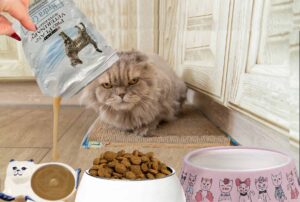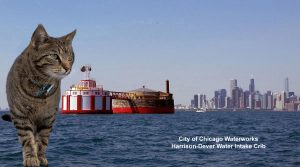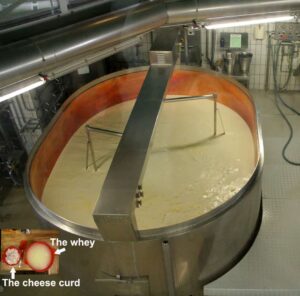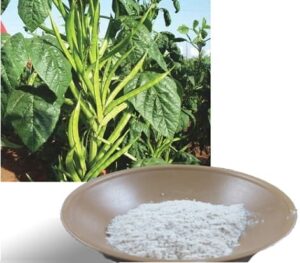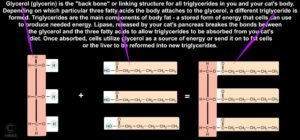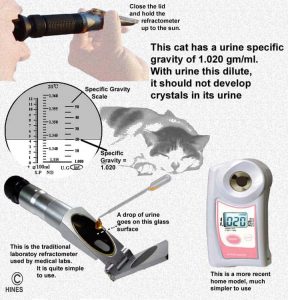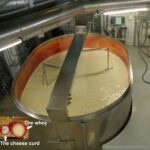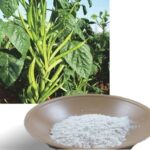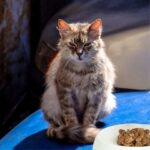 Cat Owner’s Experience With Hydra Care™
Cat Owner’s Experience With Hydra Care™
Hydra Care™
Ron Hines DVM PhD
In 2020, Purina introduced Hydra Care™, a novel product designed to tempt your cat into consuming more water. Veterinarians have long suspected that house cats consume less liquid than Nature intended. Many believe that is because the natural diet of their wild ancestors consisted of whole rodents that are 70-80 % water. Purina Cat Chow, the most popular dry cat food brand in America, lists its maximum water content on the bag as 12%. But more accurate analysis of their product found that its water content was 7.6%. Royal Canine’s Feline Adult Dry’s maximum moisture content is 8%.
Because cats relied on their rodent prey to supply much of their water needs, the anatomy of your cat’s tongue and mouth are not conducive to drinking a lot of water. Each lap your cat makes from its water bowel takes in a very small amount of water. Cats need about 3.5-4.5 ounces (103.5-133 ml) of water per 5 pounds (2.27 kg) of their body weight per day. If you are feeding your cat a canned or home-prepared diet, your cat gets almost all its water requirements from its diet because those diets are 70-80% water. But if you are feeding your cat primarily a dry kibble that is not the case.
Neither cats nor dogs can suck as we humans can. Their mouth and tongue muscles and anatomy don’t allow it. Despite having mouth contours that are generally alike, cats and dogs have solved their drinking problems in different ways. When cats lap, they consume only the water that coats their lower tongue aided by a cured tip. (read here)
When dogs lap, their tongue scoops up water somewhat like a ladle (a spoon). (read here) Hydra Care™ attempts to get around this problem
What Signs Might I Notice If My Cat Is Dehydrated?
Just about any serious health issue that your cat might experience will eventually cause dehydration as your cat loses interest in eating and drinking. That includes all forms of kidney and urinary tract disease. However, no veterinarian has ever proven that the chronic dehydration theory is correct or that chronic dehydration is the underlying cause of any disease.
A cat that is 3-5% dehydrated would probably look normal to you. By the time it was 6-8% dehydrated your cat would probably be listless or irritable. Your cat’s heart rate and pulse might be elevated and its eyes slightly sunken. It would probably visit its litter box less frequently. Anything above that reduces your cat’s blood volume, increasing the severity of signs. At about 12% dehydration, signs of hypovolemic shock begin to occur. These cats need immediate intravenous fluids.
What Might Might Be The Effect Of Chronic Dehydration?
One of the first signs of chronic dehydration is constipation or firmer-than-usual stools. That is because your cat’s intestinal motility decreases during dehydration, allowing more water to be reabsorbed. Harder stools are the consequence. So, a cat prone to repeated bouts of constipation might benefit from increased water consumption.
Another result of chronic dehydration is more concentrated urine (a higher urine specific gravity) Studies at the Waltham Center in the UK confirmed that both struvite and oxalate urinary tract stones are more likely to form in cats and dogs when their urine is highly concentrated (supersaturated). Ask me for Abigail’s PhD Thesis
There are also veterinarians who believe that chronic dehydration might be a predisposing factor in kidney (renal) failure in cats. Read about that here.
Cats in the late stages of kidney failure benefit greatly from increased fluid administration. That extra water allows the small portions of the cat’s kidneys that are still functioning to better cleanse your cat’s body of uremic toxins by producing high volumes of very dilute urine that prolonging the cat’s life
Can You Tell Me The Science Behind The Hydra Care™?
Water
Hydra Care™ is about 98% water and 2% solids. In contrast, the skim milk you buy is about 8.7% solids and 91% water. The missing 0.3 in skim milk is the residual butter it still contains. Yet, Hydra Care is considerably thicker than skim milk. That is because of all the thickening agents that have been added to entice your cat to drink it.
Liver Flavoring
The second most important non-thickening ingredient that is in Hydra Care™ is the liver flavoring they add. In earlier development of the product the flavoring agent was 1% poultry digest, not liver. The Hydra Care™ label does not tell you the source of the liver. But most pet food companies that add liver flavoring rely on freeze-dried dehydrated whole beef liver. Freeze-dried powdered beef liver flavoring is also used in the human food industry. That liver-based product when used to flavor human food is about 60% protein, 5-15.5% fat and 2% fiber.
As I mentioned, the small amount of liver added to Hydra Care™ would still leave the mixture not much thicker than water. Flavoring not withstanding, cats can’t suck up liquids and the whole point of Hydra Care™ is to offer your cat something more enticing and with a different mouth feel and taste than water.
Whey
So to thicken up the liquid, flavorful whey protein powder is added. Whey is a byproduct of the cheese and dairy industry. It is particularly rich in branched chain amino acids – one of the building blocks of protein. When processed correctly, whey is also a gelling agent that adds thickness of Hydra Care™. The amount of amino acids (“organic osmolytes”) furnished by the added whey and liver proteins is infinitesimally small when compared to the amount of amino acids your cat consumes in its meat-based diet. So, it is a bit far-fetched for the Purina Marketing Department to suggest that Hydra Care™, “enriched with organic osmolytes” in the whey and liver are going to change anything in your cat “at the cellular level”.
Guar Gum
So, we now have aroma and taste. But we still need the product thicker to attract your cat. For that, Purina adds an emulsifier, Guar gum. Guar gum is odorless and almost tasteless. Besides being a thickener, it is an emulsifier. Therefore, it helps keep the first two ingredients from settling out. Guar gum is also a soluble fiber that retains (“sucks up”) water. Therefore, guar gum supplements have been found to be helpful in treating chronic constipation in humans. If it is of benefit to cats with chronic constipation problems is unknown.
Glycerol
In a Purina study that led up to the manufacturing of Hydra Care™, glycerol represented 1% of the flavored liquid offered to the cats. (read here) The Hydra Care™ label does not tell you how much glycerol it contains. Glycerol (glycerin) absorbs water (it is hygroscopic). A lot of foods and cosmetics contain glycerol. Linked together with three fatty acids, glycerol forms the triglycerides in you and your cat’s body. Glycerol has a sweet taste. It is also a thickening agent added to dough and cake icing as a conditioner. Its slippery nature makes it a common ingredient in personal care products, hair gels and laxative suppositories. Your cat’s body naturally forms glycerol in its fat cells and liver from glucose (glyceroneogenesis). That the addition of glycerol to Hydra Care™ will “help hydrate your cat at the cellular level” is completely unproven. To the best of my knowledge, the administration of glycerin to humans suffering from chronic dehydration has never been proposed as being therapeutic for anything. In wrestlers dehydrated from exertion in the ring, 3% glycerol added to water had no more effect on their hydration than pure water. (read here)
Glycerol is actually a powerful cellular dehydrating compound. (read here & here) However, not in the very small quantities (1%) found in Hydra Care™. There is no scientific or other evidence that cats with kidney issues have lost the ability to synthesize all the glycerol they require. Glycerol is just one of many energy sources for the body. (read here)
Potassium Chloride
I am sure that there is a reason why potassium chloride (KCl) is added to Hydra Care™, but I do not know what it is. Purina makes a point of listing KCl in their list of the product ingredients whereas important contents like sodium and phosphorus are not mentioned. Purina has never been as forthcoming as Hills pet foods when it comes to sharing their product analyses with the public. The salty taste of KCl encourages thirst and drinking. But if in fact Hydra Care™ contains a similar amount of potassium as in their earlier trials (0.1%), it is not likely to be enough to encourage drinking. The Hills kidney and urinary tract diets all hover around 1% potassium. Perhaps they just wanted to confirm that the potassium level in their product was low since elevated blood potassium levels often accompany kidney failure.
How Would I Know if My Cat Is Benefiting From Hydra Care™?
Measuring the actual volume of urine your cat is producing before and after beginning Hydra Care™ would be quite a challenge. But if your cat consumes more water it will produce larger volumes of more dilute urine. I encourage my clients to purchase a refractometer. A device that measures urine specific gravity. The little device is not expensive and is quite easy to master. Low specific gravity urine is also a sign of advanced kidney disease as the body attempts to keep blood toxin levels low by over-utilizing its remaining kidney filtering nephrons by encouraging thirst. But the effect of hydration is almost immediate, as you know when you drink a large glass of water. So, a change to lower specific gravity urine after beginning Hydra Care™ is a change for the better. There are cat litters on the market that allow one to collect the small urine specimen that is required.
I know that the Purina YouTube video limits its recommendation for the use of Hydra Care™ to lower urinary tract problems such as oxalate and struvite crystals (= FUS) and chronic cystitis. Those crystals tend to form easiest in highly concentrated (supersaturated) urine. But I know that veterinarians have already suggested the Purina product for cats with chronic kidney disease, as has Purina’s own promotional material. It is a valid use.
So, any decrease in the elevation of blood creatinine level in a cat suffering from kidney disease after beginning Hydra Care™ would be a blessing as well.
Do I Have Options Other Than Purchasing This Product?
Yes.
The simplest and most effective way to keep your cat well hydrated is to feed it a moist diet. My preference is for a diet you prepare at home from the same meat supermarket ingredients you eat, to which you have added a reputable mineral/vitamin supplement. But the major canned cat food brands will hydrate your cat just as well. Dental chews, if your cat will accept them, will retard the formation of tartar. (read here) So will brushing your cat’s teeth.
Others attempt things like novel water bowls, fountains and water dispensers at multiple locations with mixed success.
Once your pet’s blood creatinine levels begin to increase, some cat owners become comfortable administrating subcutaneous injections of hydrating fluids (PSS) to their cats. But many cat owners are just not comfortable with that procedure and quite a few cats are not either. Multiple visits to your veterinarian for fluid injections are also stressful to many cats. I never suggest it as a long-term therapy for anything less than late-stage kidney failure. When required, a dispatched veterinary nurse or house call vet might be the better option.
Cats are creatures of habit. There are cats so accustomed to their dry kibble diet that they will not accept moist or canned cat food. Just like humans, your cat’s taste preferences are established in its youth. Those cats need to be converted to more hydrating diets slowly – first with small amounts of dilute meat or tuna broth added to their dry diet. Offer tuna sparingly, cats can become addicted to the flavor of tuna and similar fish rather quickly – less so with poultry.
Can I Prepare My Own Hydrating Solution For My Cat?
Certainly.
Some might balk at paying exorbitantly high prices for what is essentially water and requiring your veterinarian’s permission to do so to boot. Besides, all cats are unique, and your cat might prefer the flavored water mixture you make in the kitchen.
The aroma of food is very important to your cat. Probably considerably more so than taste, since cats have relatively few taste buds. Purina UK states that at cat’s sense of smell is 40 times as sensitive as ours. That’s based on the number of odor detecting cells in their nose and the roof of their mouth. But others rank a cat’s abilities to sense smell at perhaps ten times better than ours.
Our cat, Oreo 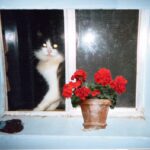
If Oreo were still with me, I would begin with a slow-cooked meat broth – what I still prepare for my 15-year-old Labrador Retriever, Maxx. 
Perhaps some liver broth or human-grade powdered liver for flavor. Discuss that with your cat. There is certain to be some trial and error similar to what Purina went through. When you have something to report, I will add it at the bottom of this article.
As for whey, I see no need for it other than if your cat prefers its additional aroma and flavor. It will, however, thicken up your mixture, which is what we want to do, so your cat approaches it more like eating than drinking. Whey is a byproduct of the dairy industry. It varies greatly in its taste and aroma depending on what cheese product produced it, how it was dried and how it was processed. If your cat doesn’t like the first brand, try another brand.
Does your cat enjoy Chobani plain Greek Yogurt? It still has more lactose than whey, but a considerably smaller amount than whole or skim (skimmed) milk. Most cats gradually lose their ability to digest lactose as they mature. But lactose intolerances (generally expressed by bloat and loose stool) vary greatly between cats.
I believe that most of the thickness of Hydra Care™ is obtained through the addition of Guar bean gum. Guar gum is available as a white powder on Amazon with instructions as to suggested amounts to add. I would add no more than what seems necessary to entice your cat to consume what you have prepared. You still want the final mixture to be 95-98% water.
Why Does The Package Say For Cats Only?
What if my dog drinks Hydra Care™? What if my husband mistakes it for creamer? The Purina folks at the St. Jo center told me that there is nothing in in Hydra Care™ that one cannot safely consume. The For Cats Only is just part of their marketing plan.
You are on the Vetspace animal health website
Visiting the products that you see displayed on this website help pay the cost of keeping these articles on the Internet.

